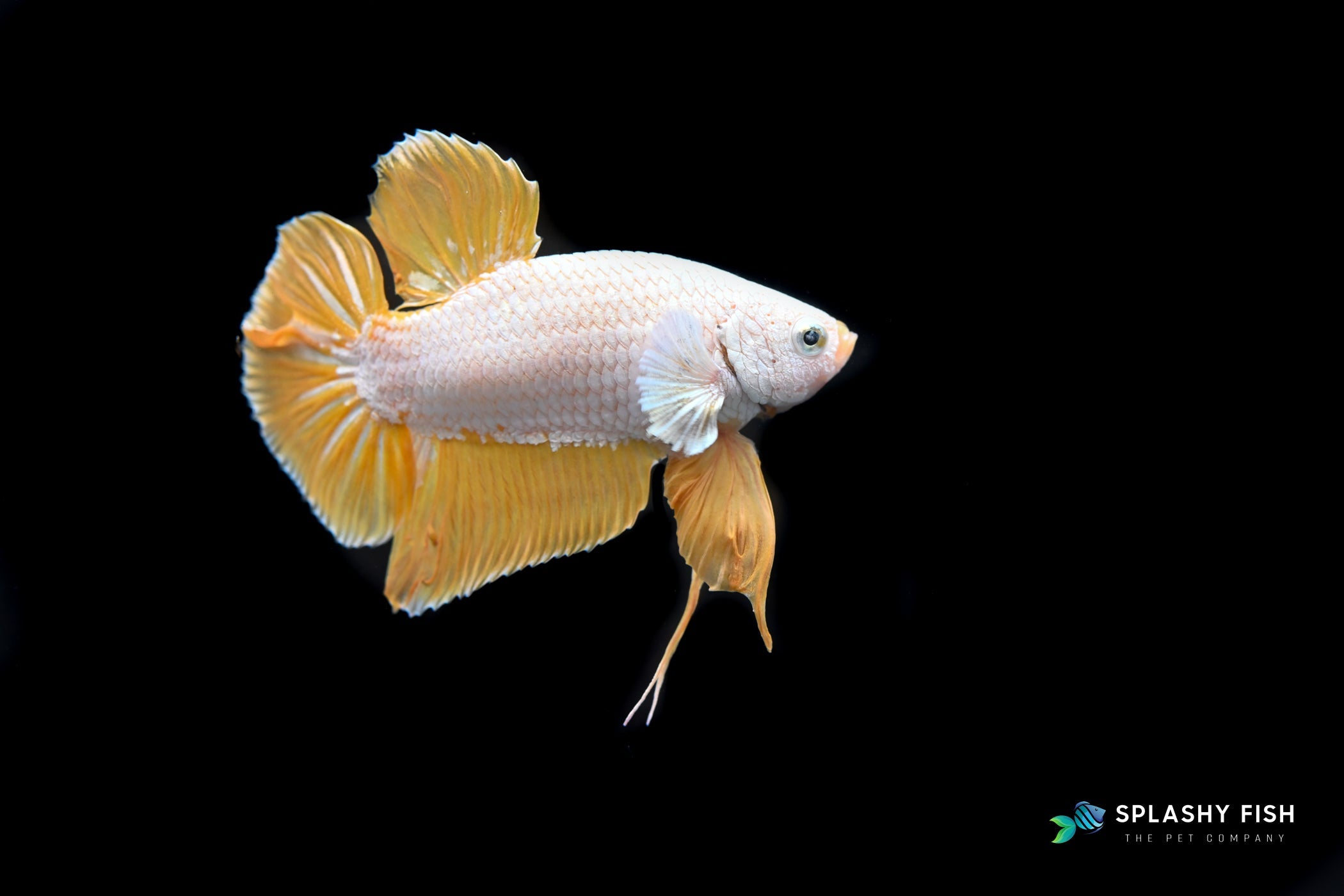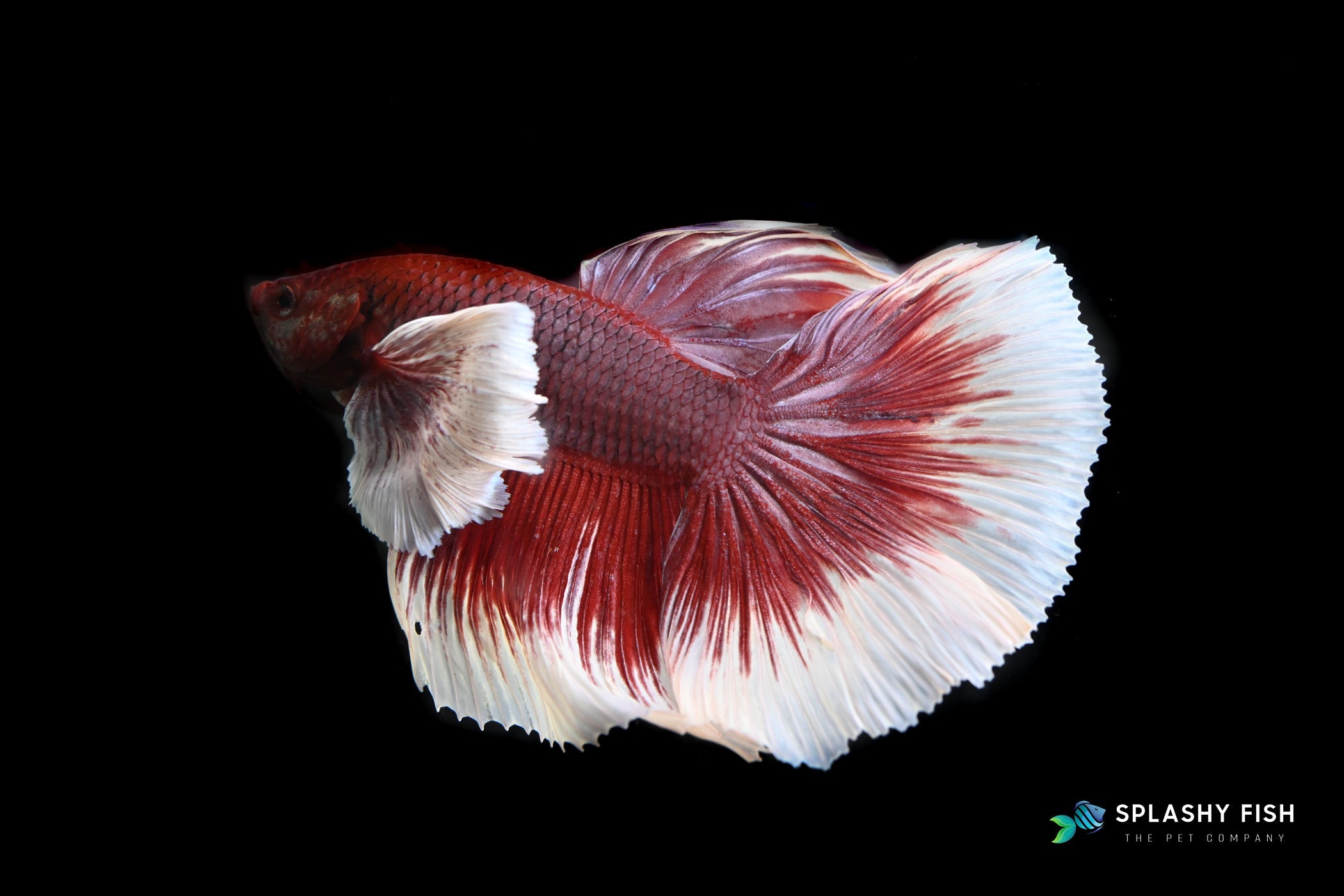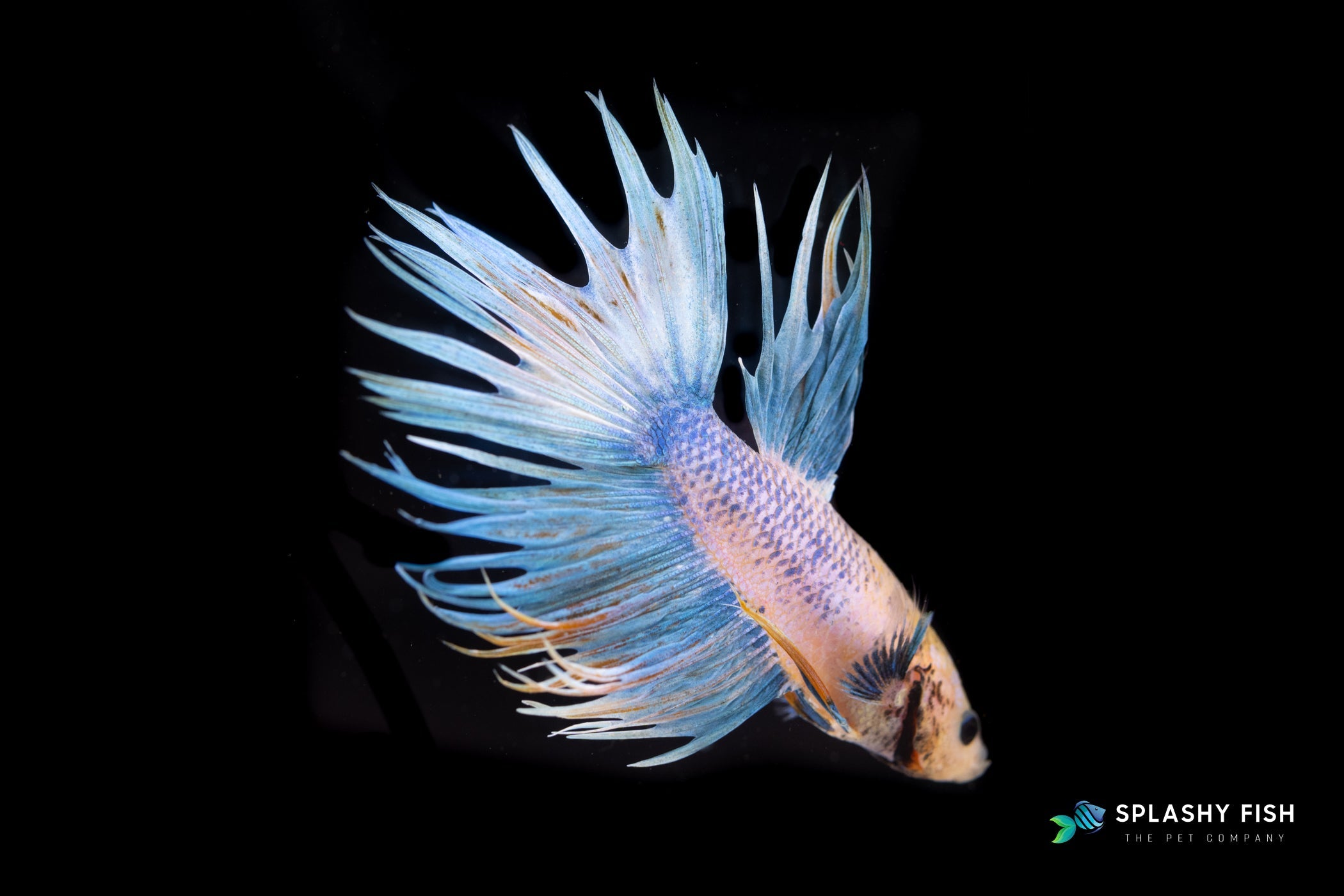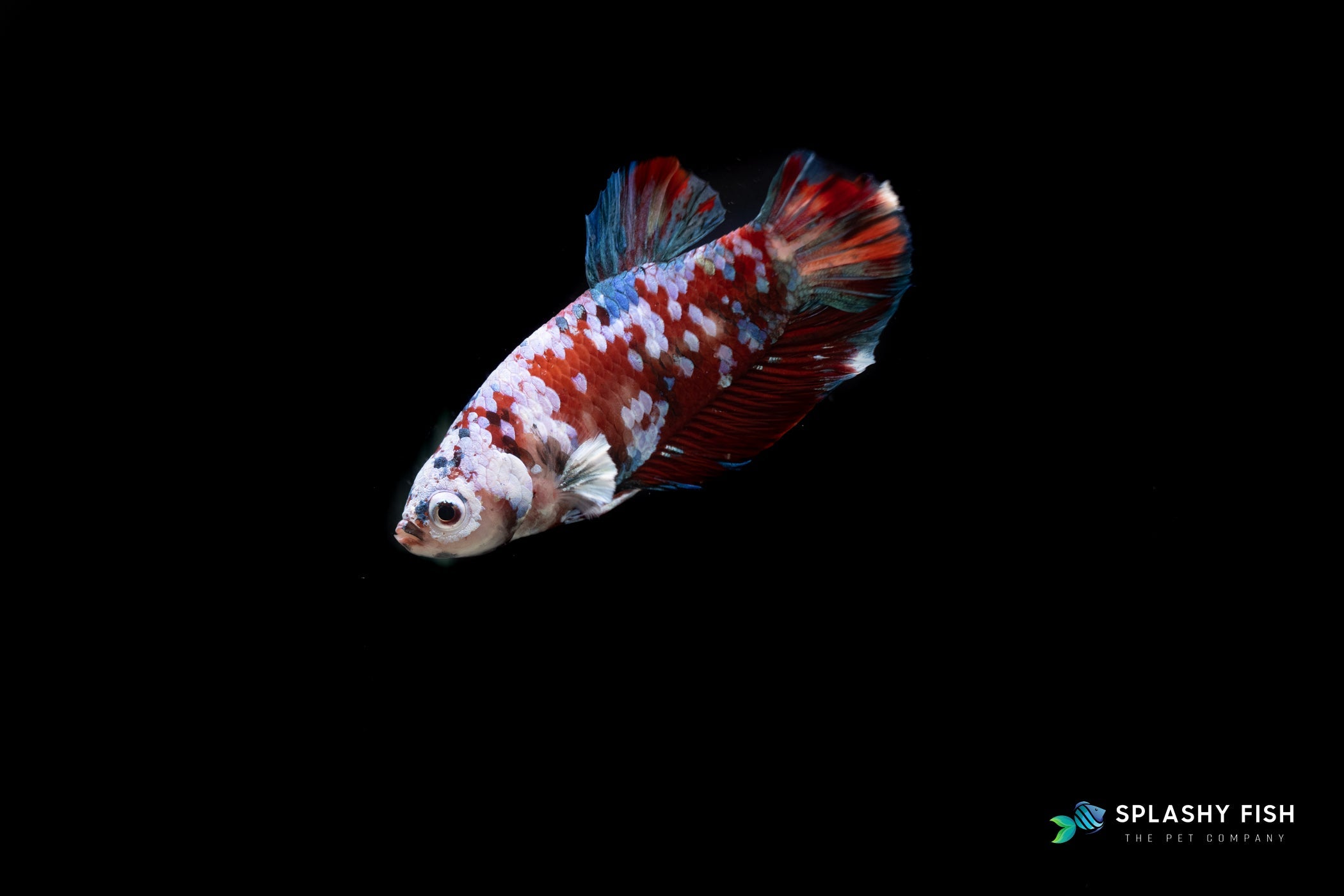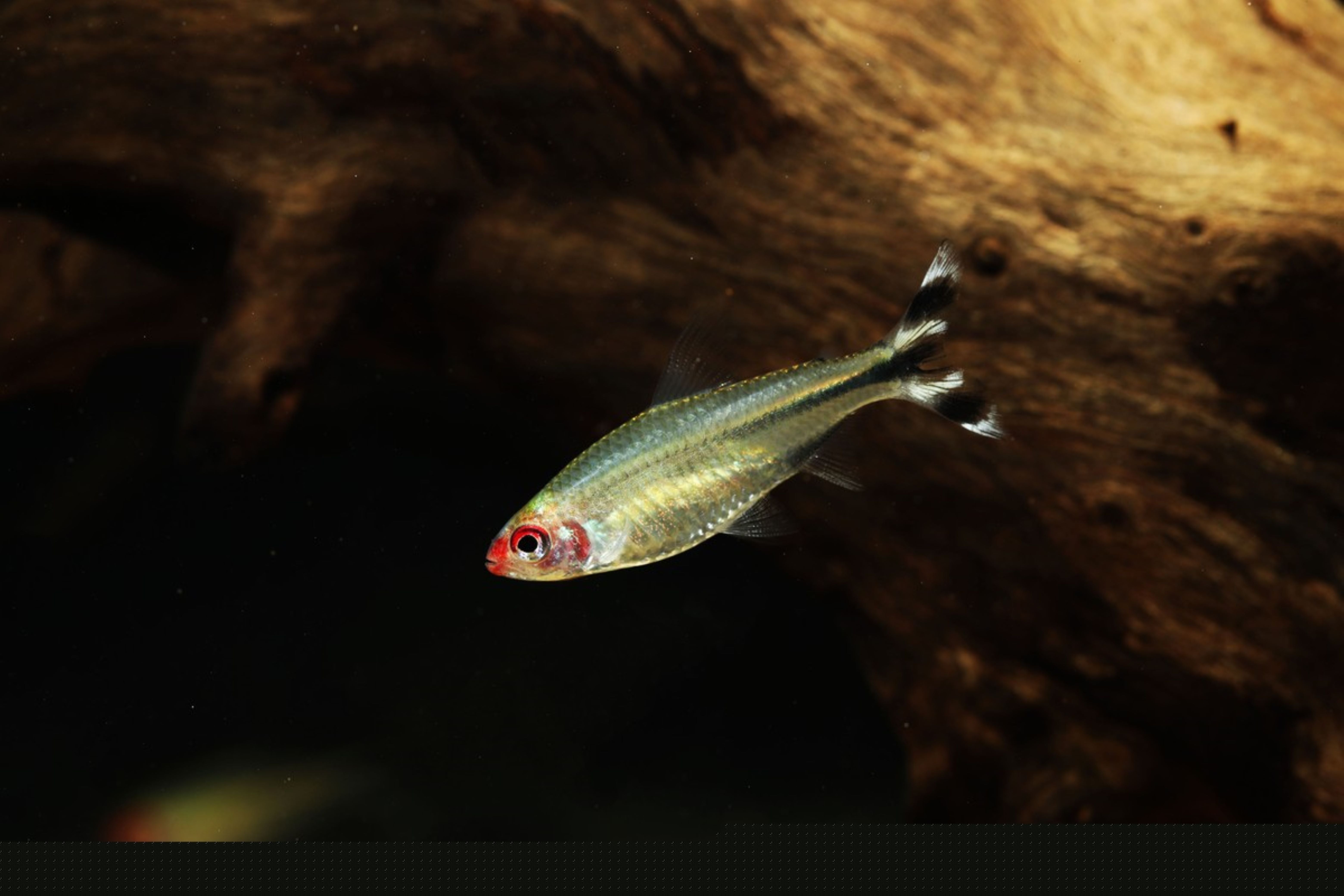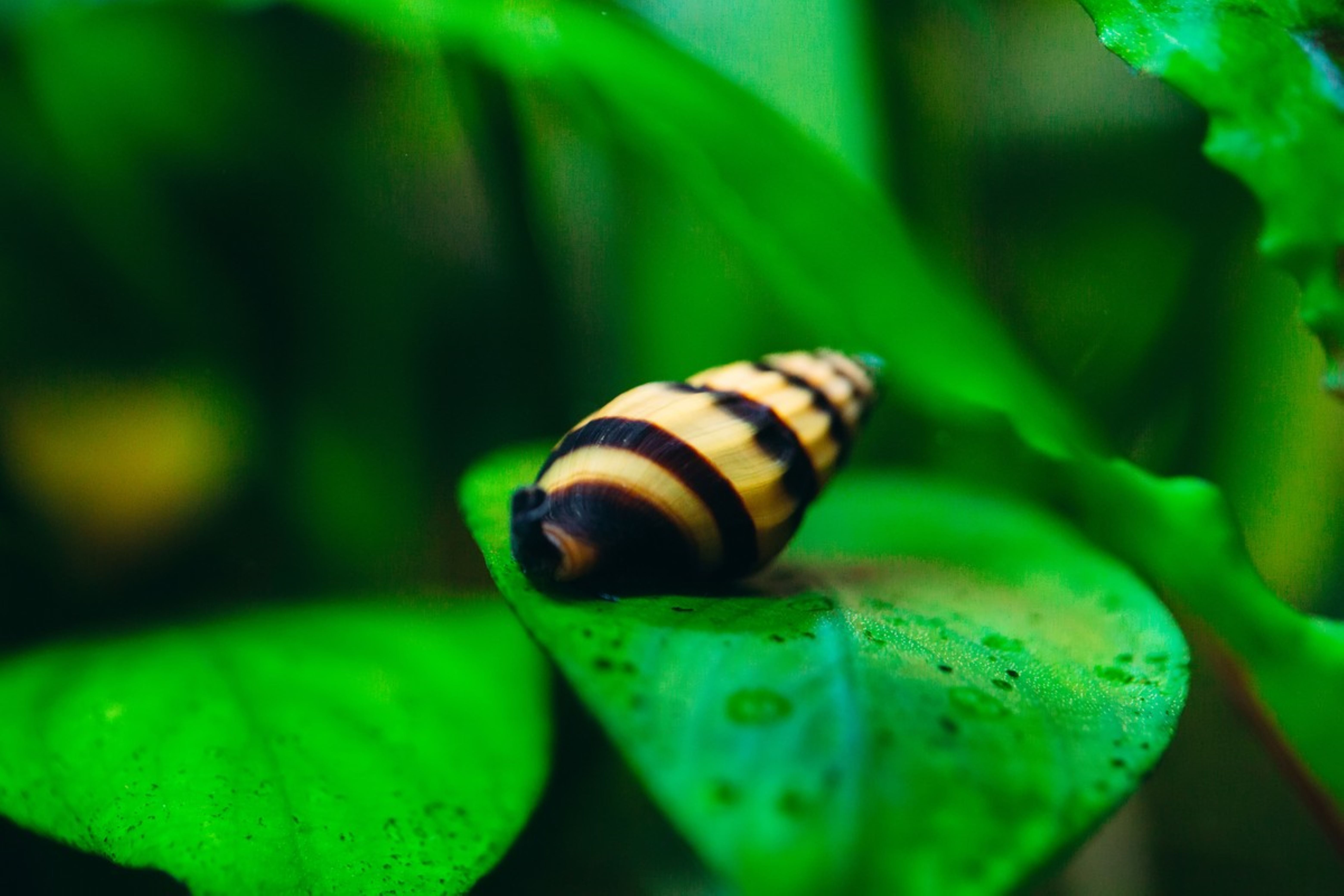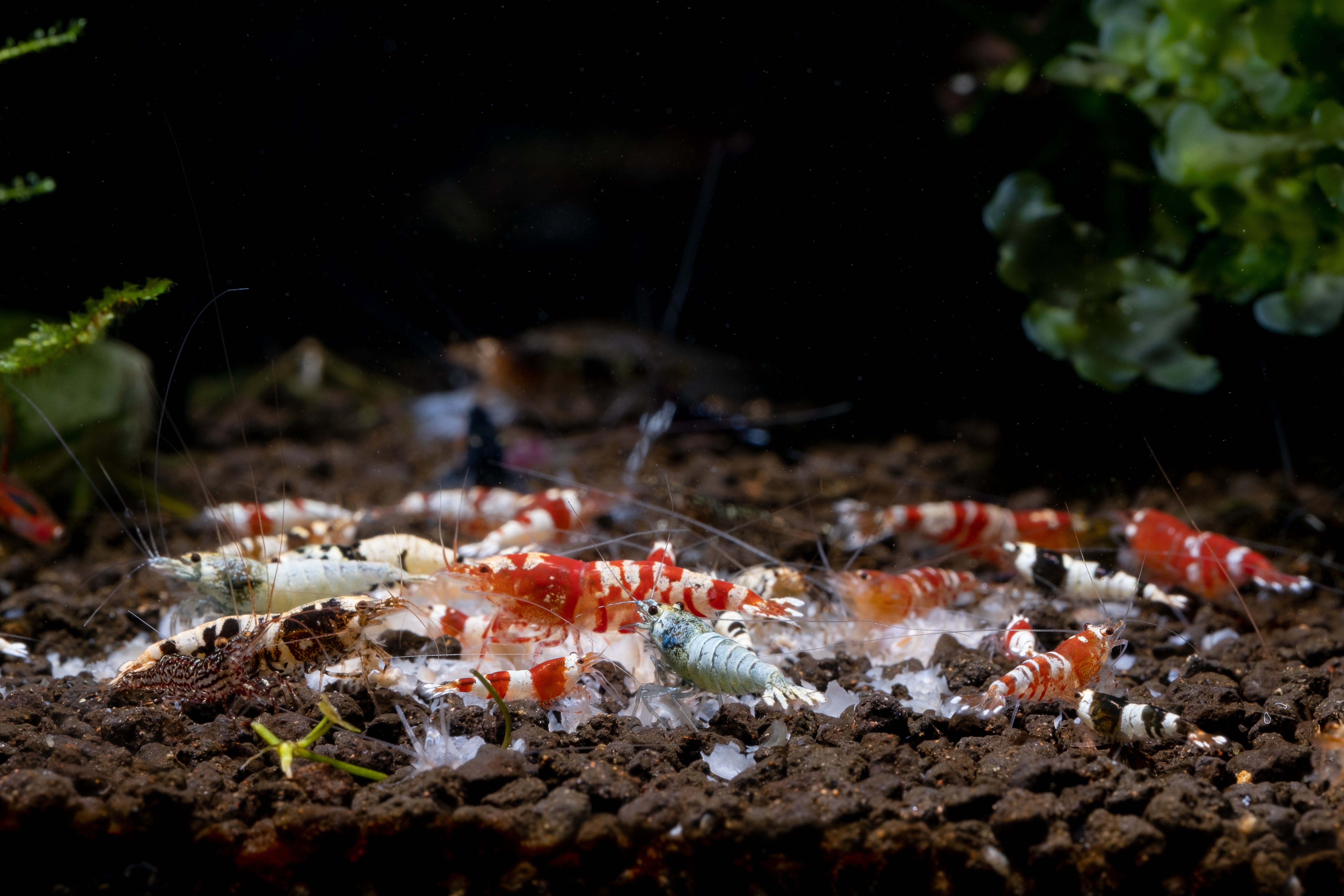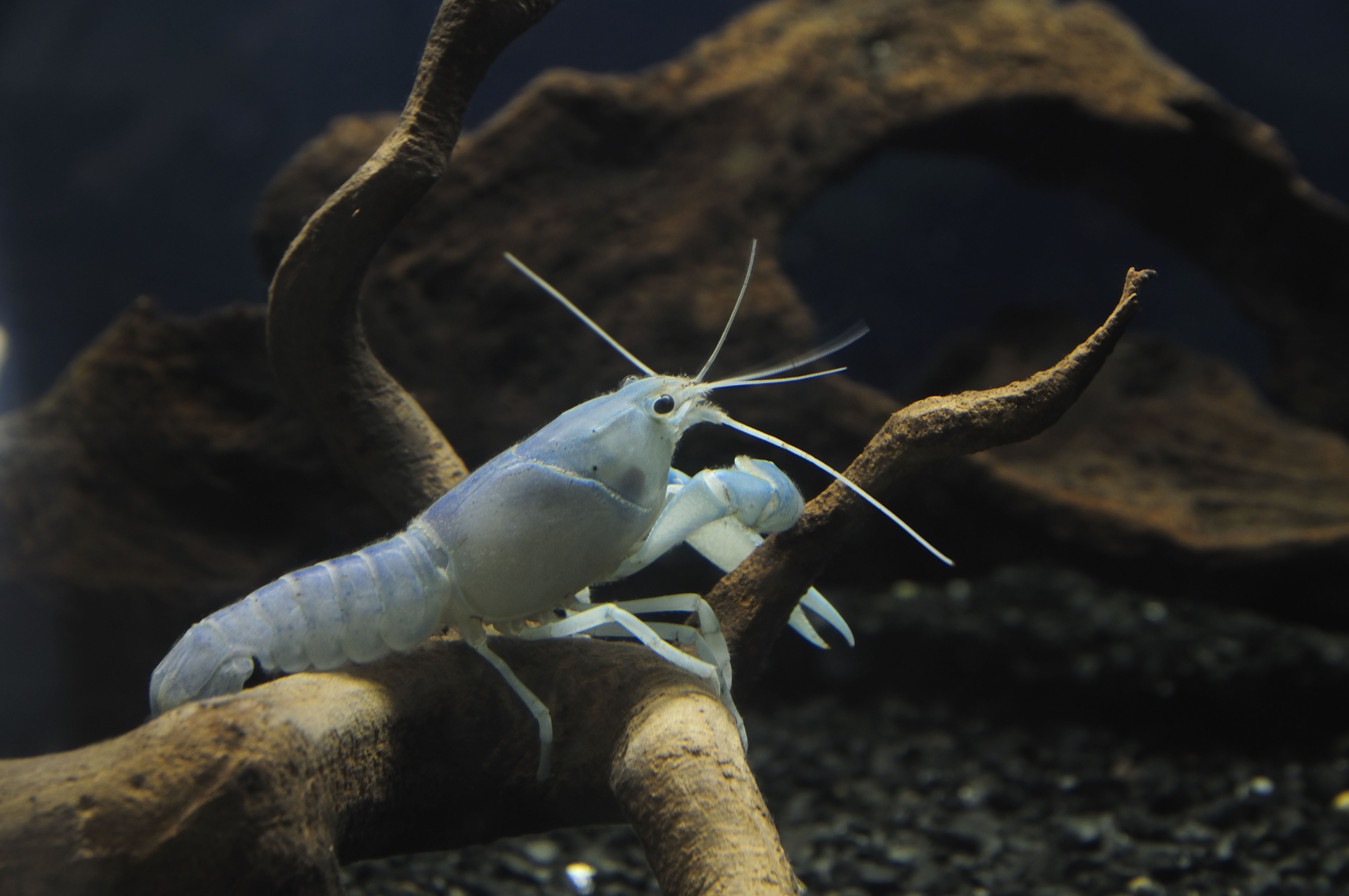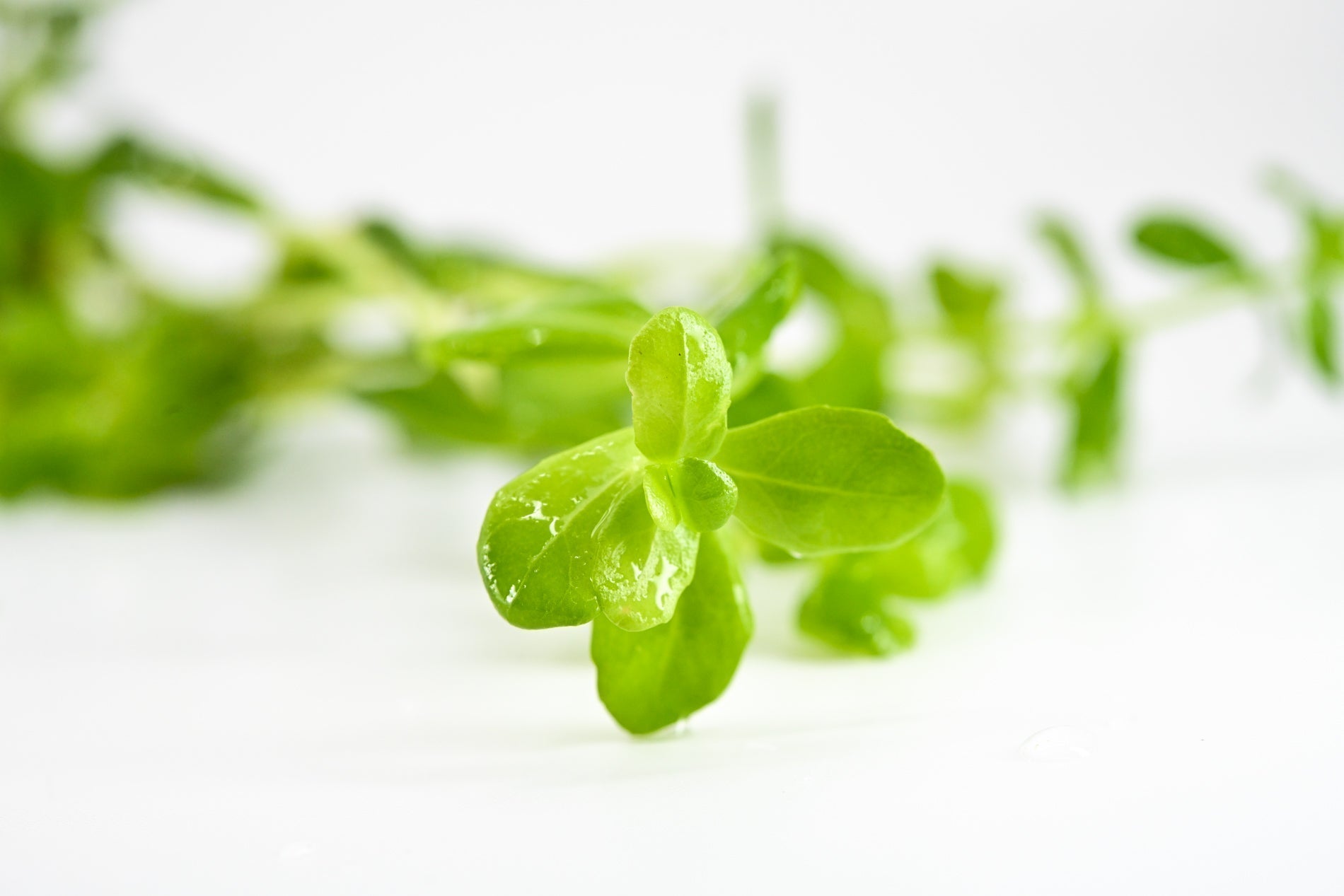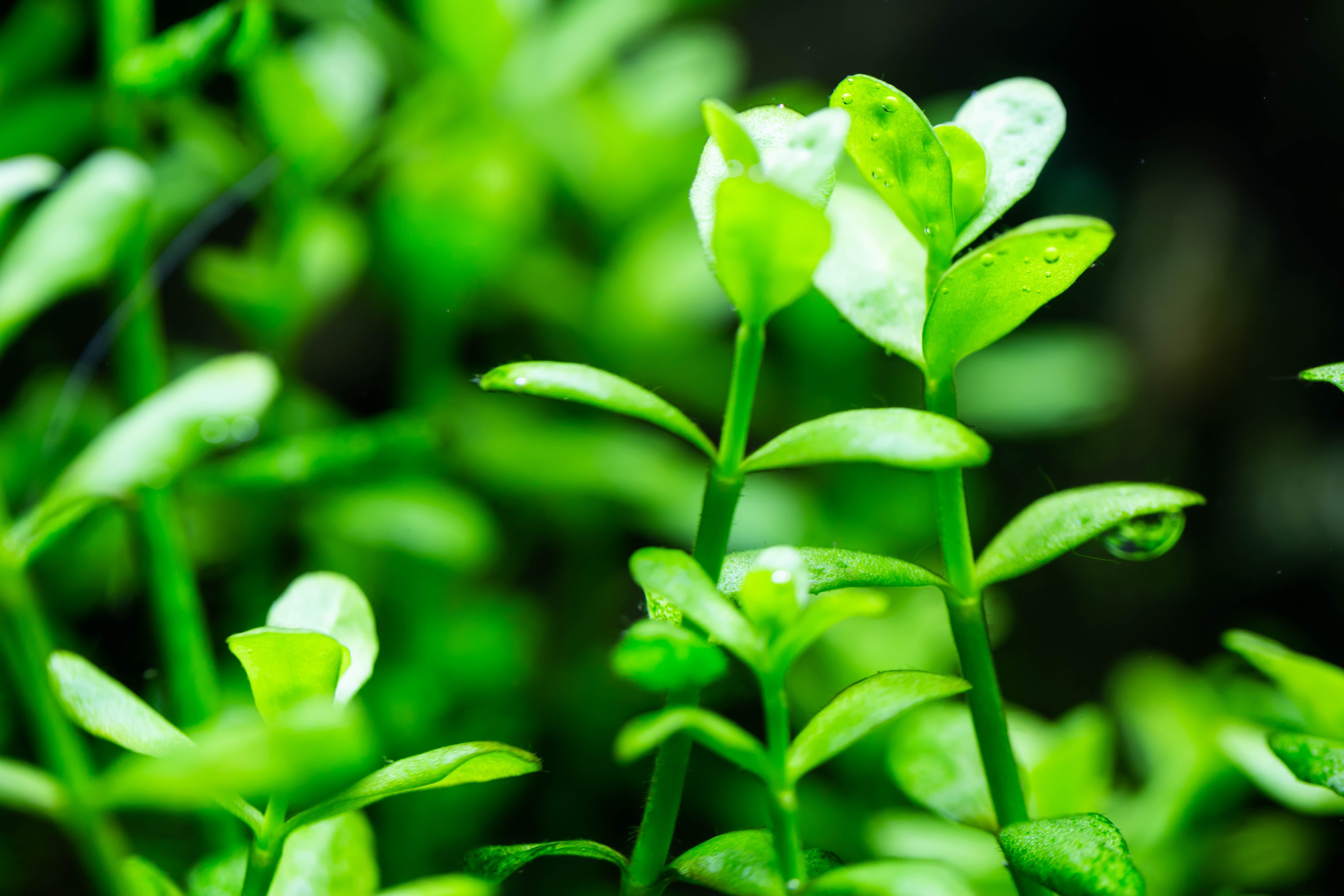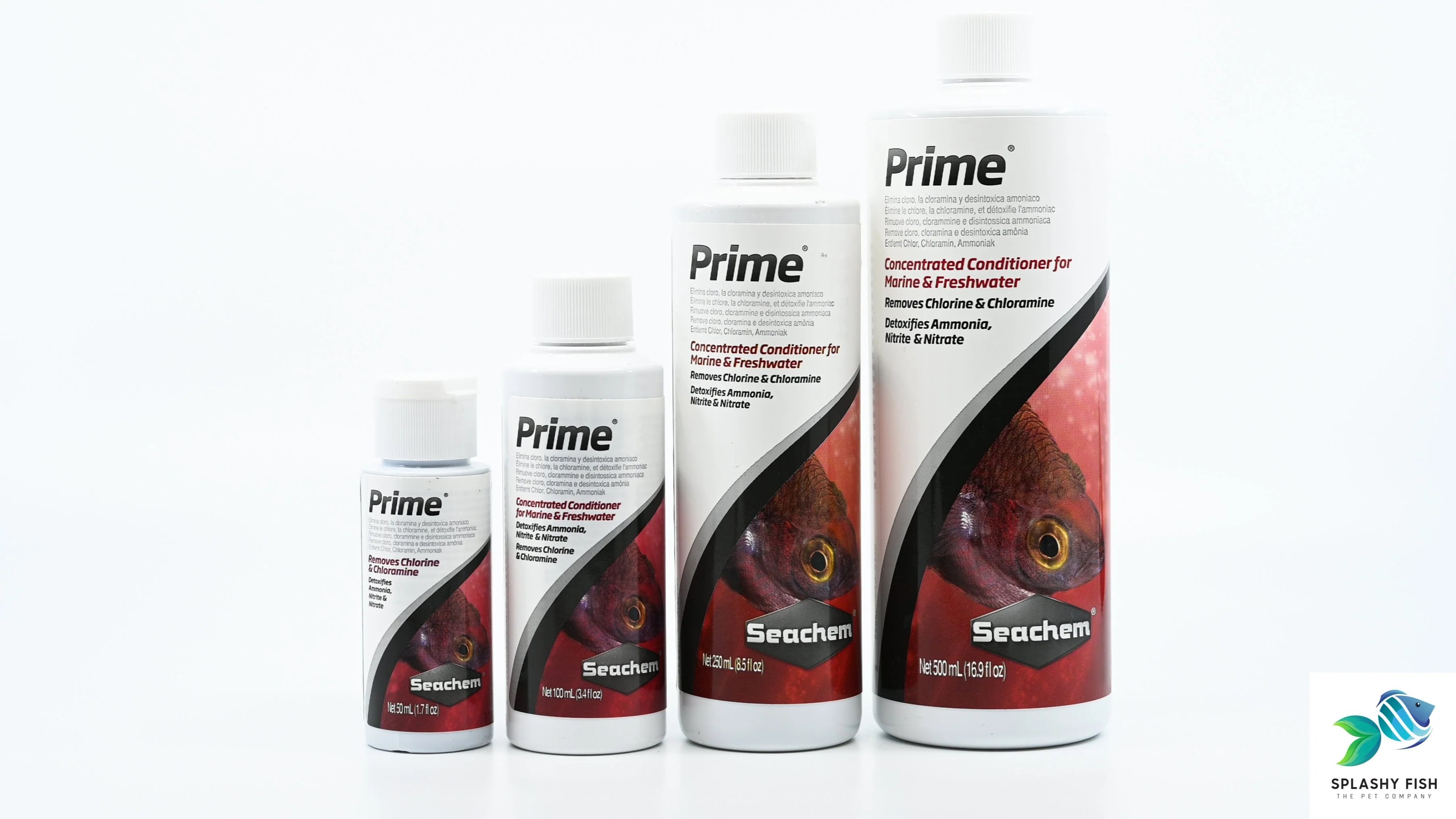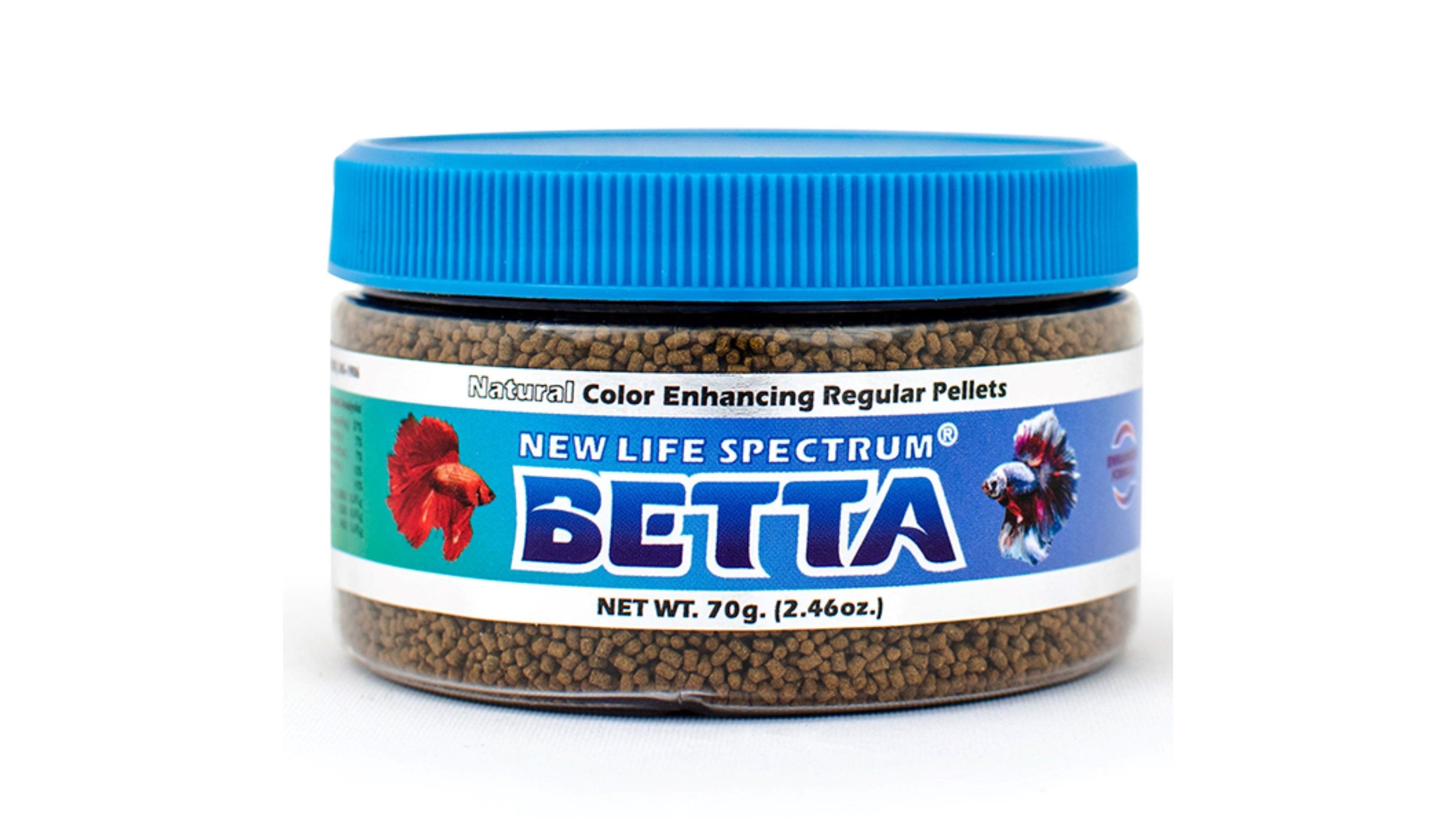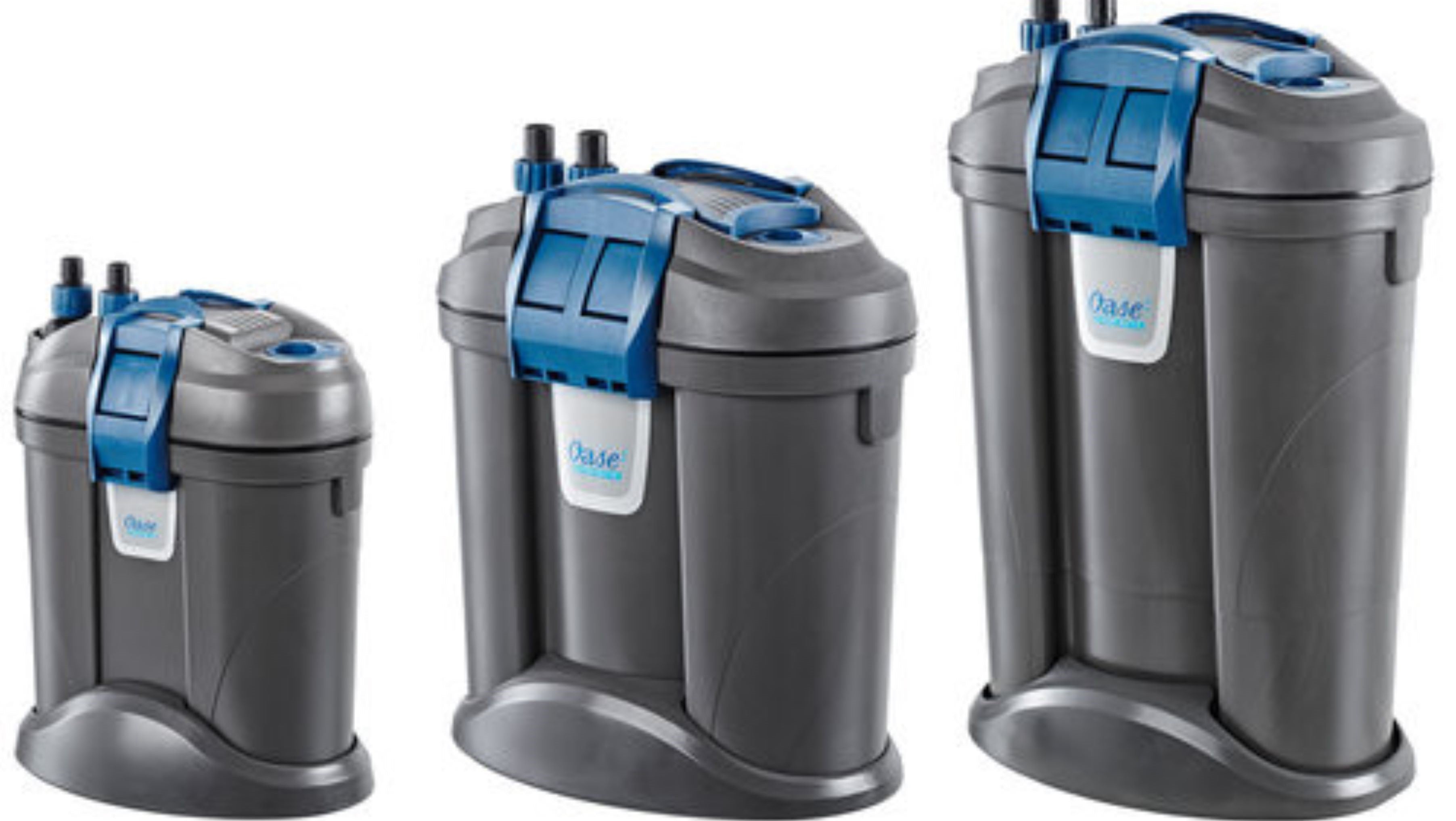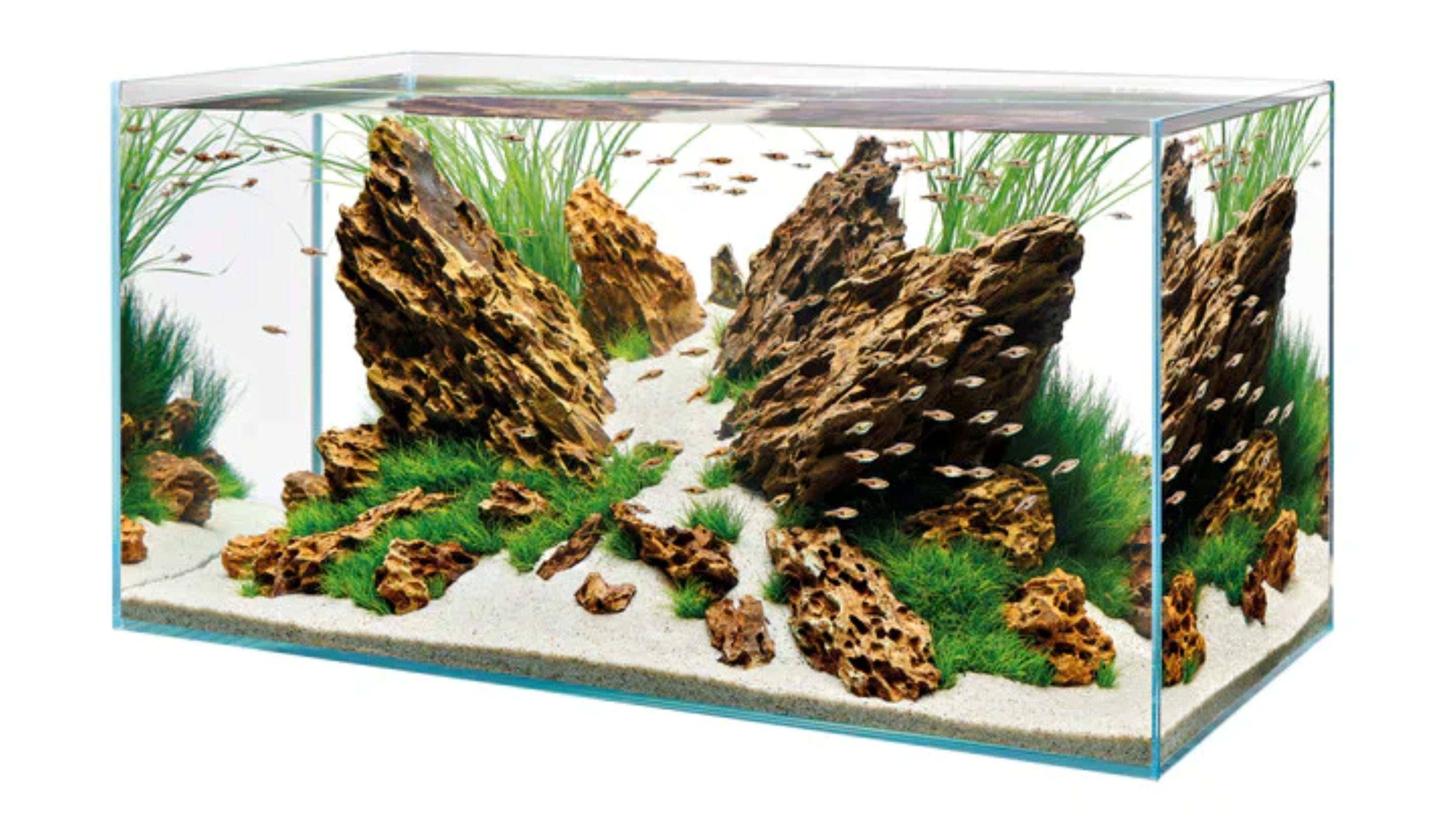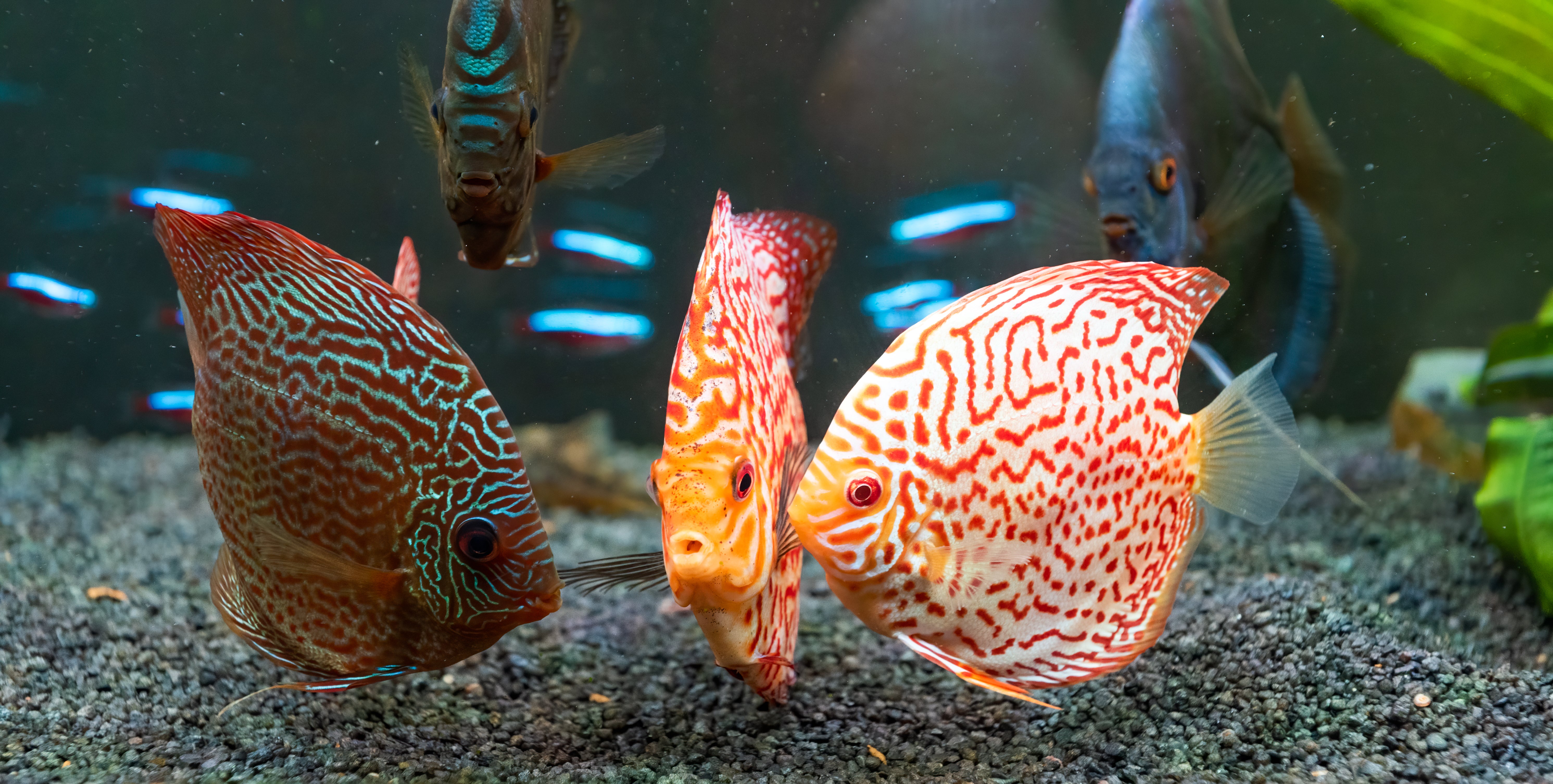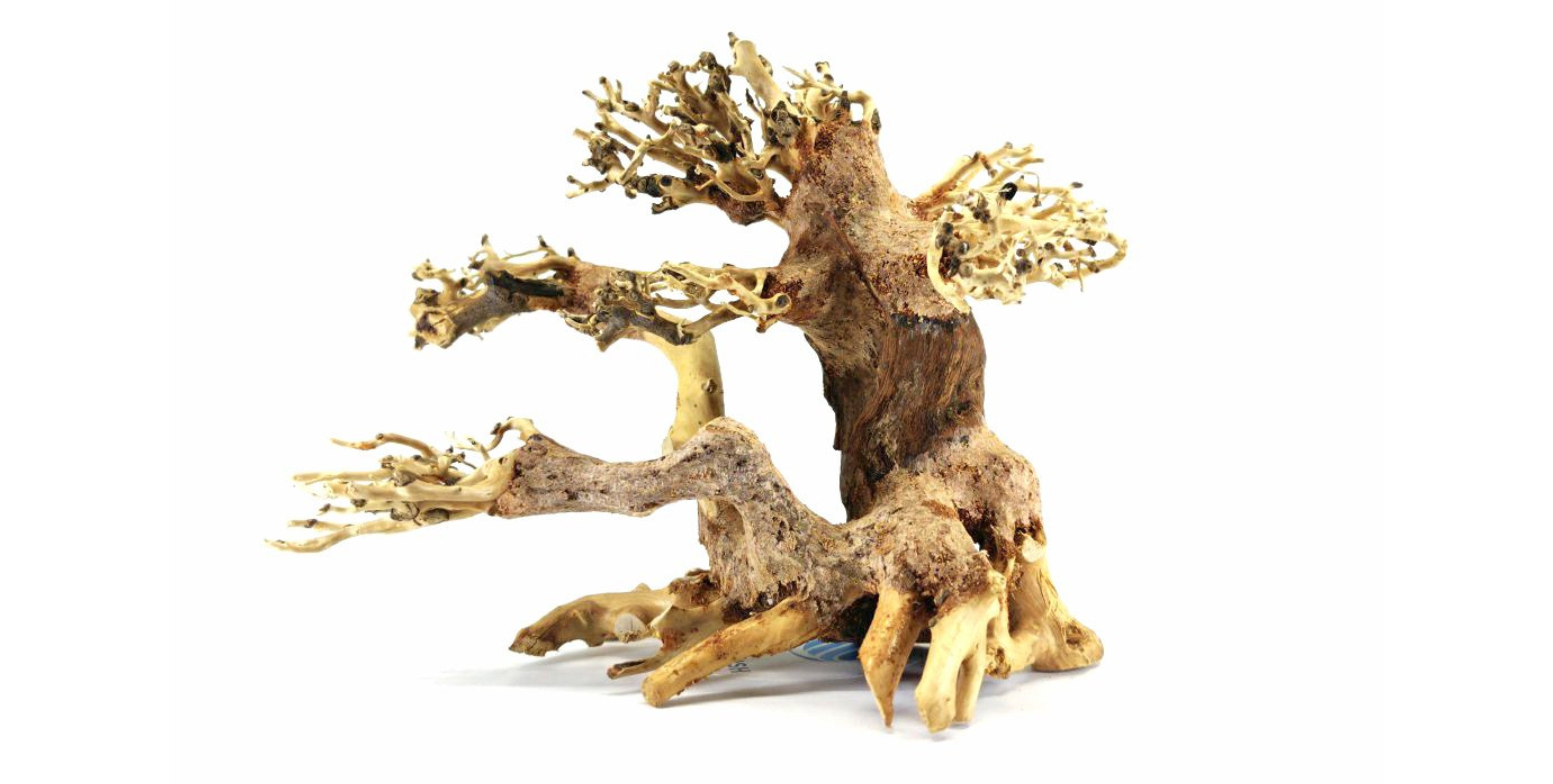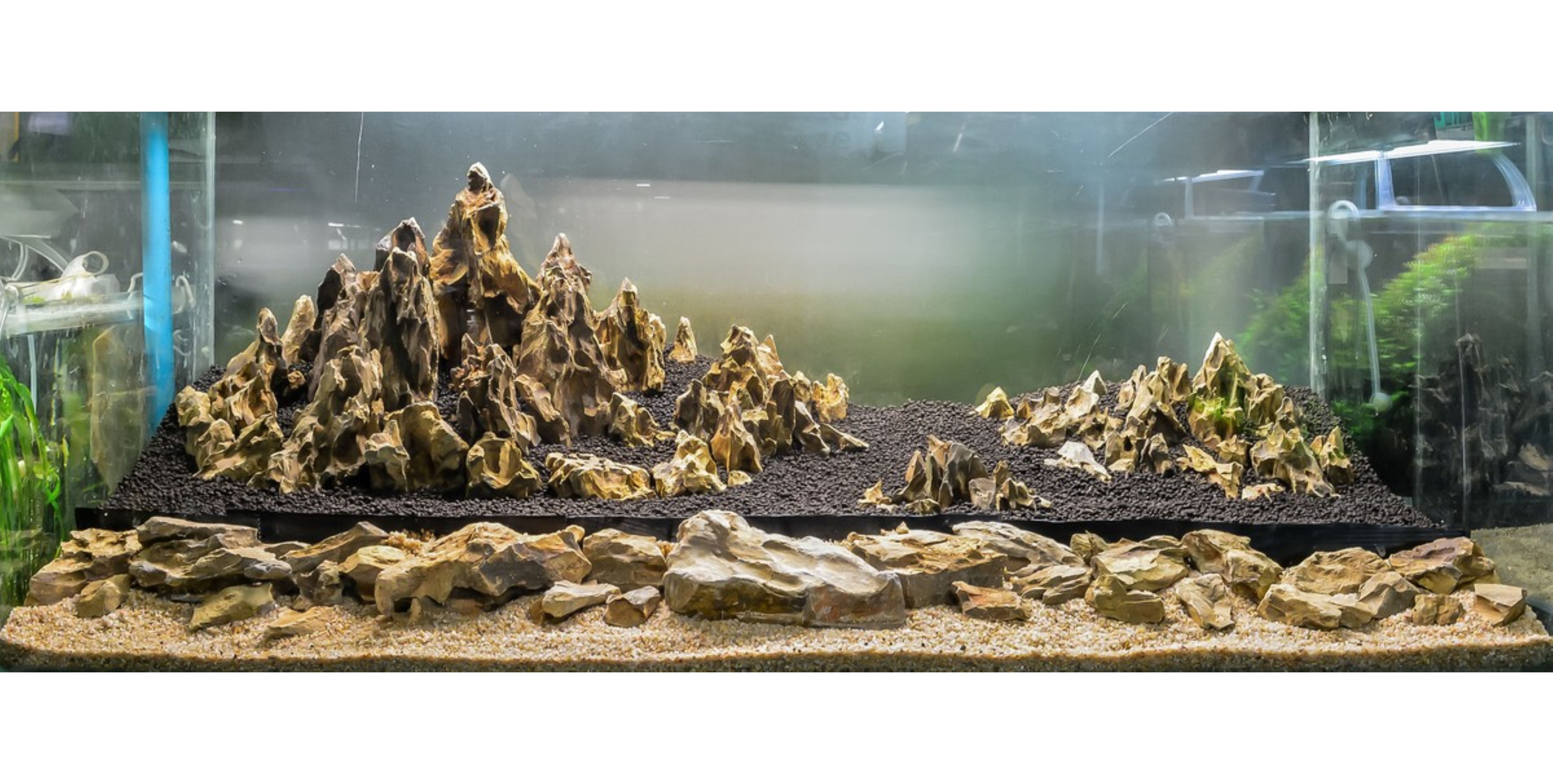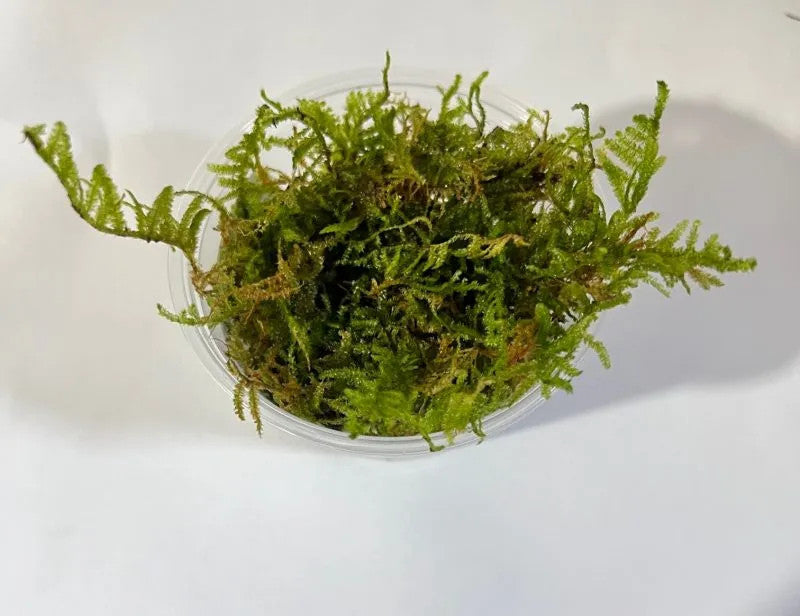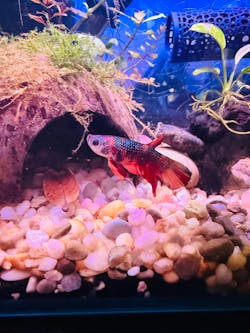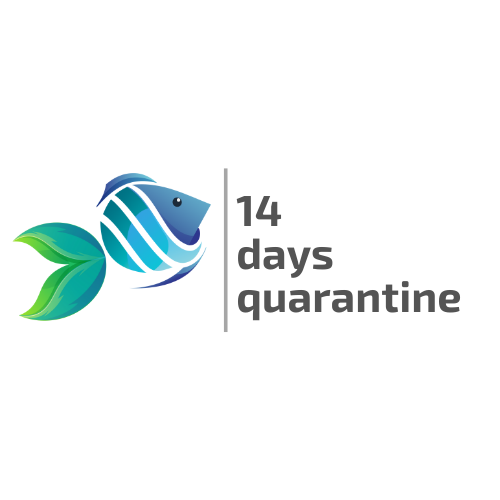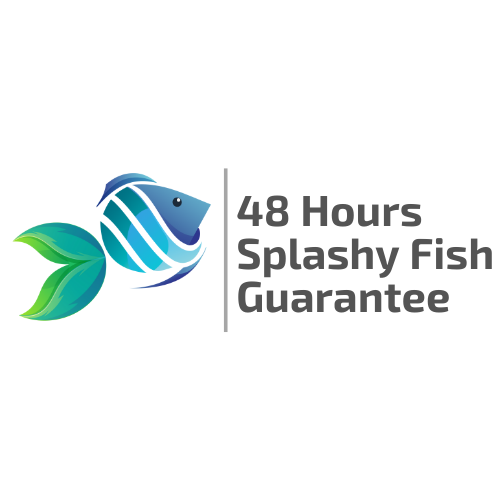
Christmas Moss
- In stock, ready to ship
- Inventory on the way
- Fast shipping
- All Plants are submerged growth
- Live Arrival Guarantee

This is only apply to live fish order.
What is Our Live Arrival Guarantee?
Benefit from our extensive experience in shipping live fish. In 2021, our records indicated a mere 0.5% dead-on-arrival (DOA) rate for all live fish orders, compared to the industry standard of 1.5%. These numbers translate to only 5 out of 1000 orders experiencing DOA fish.
At Splashy Fish, customer satisfaction is our priority. That's why we provide a 100% Live Arrival Guarantee on all animals shipped via USPS, UPS, or FedEx. Please note - Splashy Fish reserves the right to void Live Arrival Guarantee protection under the following circumstances:
- The customer has chosen USPS First Class Mail as a shipping method.
- The shipping address is a PO Box address
- The order was refused delivery by the customer.
- If the order is returned to the sender for any reason. For instance, an incorrect shipping address, an undeliverable address, etc.
- The order was held for pick up at USPS, UPS, and FedEx offices for longer than 24 hours after the last update on the tracking number.
- The Live Arrival Guarantee claim does not include all the requirements mentioned below
- The Live Arrival Guarantee claim is made after the claim period mentioned below.
- The animals are not in their original packaging
Live Arrival Guarantee Claim Period:
For Live Fish and other invertebrates, one and a half hours (1.5 hours) after the posted delivery time.
For Snails: 48 hours after the posted delivery time.
Steps to claim Splashy Fish's Live Arrival Guarantee:
- Take a picture of the shipping box and the shipping label.
- For live fish and other invertebrates: Please provide two pictures of each bag (containing the dead fish) upon arrival. Ensure the images display the bag in its original, unopened condition with the original rubber band intact
- For Snails: Position the snail in one corner of the tank. If the snail does not move within 48 hours, please take several pictures of the snail's opening
- Send an email to DOA@splashyfishstore.com with the subject line: DOA and Your Order Number, or message us on social media.
- In the body of the email, include your tracking number.
- The claim must be sent within the claim period mentioned above.
After submitting the required information, please allow us 1-3 business days to determine the cause of the issue. If the claim is valid and approved by our team, you will
- Receive a store credit for future purchases, excluding the shipping cost, of the dead-on-arrival fish
If the Live Arrival Guarantee claim does not meet all listed requirements, Splashy Fish reserves the right to reject it.
Shipping live animals and plants is a complex process, and temperature plays a crucial role in ensuring the safe and secure delivery of your order.
If the highest daytime temperature in your location and the lowest nighttime temperature here in Springfield, Virginia—where our facility is situated—fall below 40°F or exceed 90°F, we will proactively delay your order. This measure is taken to prioritize the well-being of the animals and plants.
For the safety of our living cargo and to protect your investment, we retain the right to suspend shipping as necessary due to extreme weather conditions. Our Splashy Fish team will assess the situation and determine if it is unsuitable to ship, considering the safety of the animals.
To stay informed or address any questions or concerns, feel free to reach out to our dedicated Splashy Fish Support team via email at support@splashyfishstore.com.
Once our team prints and packs your order, we'll notify you via email. This notification will include your tracking number and the expected arrival day. If you opt for UPS 2 Day shipping, your package should arrive within 2 days after shipment. Similarly, if you choose UPS 1 Day, your order will reach you the day after it is shipped. In the case of orders containing only plants or dry goods, they may be shipped via USPS, provided that this is the selected shipping option during checkout.
We ship all of the customer orders from our warehouse located in Springfield, VA. We pack and ship our orders depending on the orders with the exception of someday we cannot ship out live fish.
All Orders: will be shipped out from Monday to Thursday each week for overnight shipping by UPS.
Sunday: (Splashy Day) Today is the day we let our hard-working team members and our fish to destress and ready for the following week's shipment.
For more information regarding about shipping please visit us our Shipping Policy and Schedule
Christmas Moss (scientific name: Vesicularia Montagnei) is an excellent choice for most of the intended aquascaping tanks. This aquarium plant has round/ oval-shaped leaves in rich, dark green that grow shorter toward the top of the stem. Each stem then hangs down and overlaps the other, forming the shape of a Christmas tree, which explains why it can easily earn this name.
As Christmas Moss grows horizontally and densely, it displays a lush green that calms and pleases your mind whenever you look at it. Not only that, the aquatic plant also benefits your fish community by creating a perfect cover for baby fish or fish eggs.
Christmas Moss is easy to care for. They have shallow roots; therefore, they mainly absorb nutrients through water columns. In theory, the plant does not need liquid fertilizer and CO2 supplements. However, since it requires moderate to high lighting conditions to grow strongly and robustly (Christmas Moss can live under a low lighting system, but it will grow very slowly), such addition is sometimes indispensable. Christmas Moss can grow on any type of substrate, or thrive even left floating. Considering its small size (1-4 inches), they are best placed in the foreground of aquariums. Either attaching them to hardscape (using fishing line or specialized glue) or burying them into substrate are both accepted. If you feel bored with that option, you can put it in the back of your aquarium tank to build a beautiful green wall. Simply attach them to mesh materials and let them self-establish in the desired location, they soon form a thick carpet and cover up all the back of your tank with their vivid green.
Christmas Moss thrives when they settle completely immersed in water. Soft water with a pH level range between 5 and 7.5 is their favorite living condition, while the preferred temperature range for them to thrive is usually around 65° - 77°F.
If there is something that bothers your plant, it is highly likely algae, a very common problem with every Moss plant, such as Marimo Moss Balls. To avoid this irritation, your tank needs a good flow circulation and performing regular water changes.
Order Christmas Moss for sale and start to enhance your fish tank now!
What You Can Expect From This Plant:
- Beautiful lush green gives your tank a great view
- Provide hiding places for fish, baby fish, or fish eggs
- Easy to care for
RECOMMENDED TANK PARAMETERS:
- Temperature: 65° - 77°F (18° - 25°C)
- pH: 5.0 – 7.5
- GH: Medium
- Minimum tank size: 10 gallons
CARE GUIDELINES:
- Supplements: CO2 additives and fertilizer may not be necessary, subject to lighting conditions
- Lighting: Low to high, although it prefers moderate to high. Please note that high lighting conditions may encourage the algae growth.
- Origin: Asia
- Potential height: 1 – 4 inches (2.5 – 10 cm)
- Aquarium placement: Foreground, background
- Growth rate: Slow
Christmas Moss Frequently Asked Questions (FAQs)
Is Christmas Moss Easy to Grow?
Yes, Christmas Moss is easy to grow and maintain, making it a great choice for aquascapers of all levels. It grows slower than Java Moss but develops dense, creeping growth that adheres well to surfaces like rocks and driftwood. Its controlled growth and structured appearance make it less messy and easier to manage compared to Java Moss For Sale.
Is Christmas Moss Better Than Java Moss?
It depends on your needs. Java Moss grows quickly and requires minimal care, making it ideal for beginners or those with limited time. Christmas Moss, on the other hand, grows slower but offers a denser, more structured appearance, perfect for creating a polished aquascape with patience and care. Both are excellent options for enhancing your aquarium with live plants.
Where Do You Put Christmas Moss?
Christmas Moss thrives when attached to hardscapes like driftwood, rocks, or mesh. It’s ideal for creating lush carpets, vertical walls, or decorative accents in aquariums. Position it at the bottom, back, or sides of the tank to enhance the layout. This moss prefers a pH of 5–7.5, water temperatures of 72–82°F, and cool, flowing freshwater.
Unveiling the Charm of Christmas Moss: A Complete Guide to Growing and Caring for this Stunning Aquatic Plant
Are you looking to add a touch of natural beauty to your aquatic landscape? Look no further than Christmas Moss, the stunning aquatic plant that can transform any aquarium or fish tank into an enchanting underwater garden. In this complete guide, we will unveil the charm of Christmas Moss and provide you with all the information you need to successfully grow and care for this captivating aquarium plant. Christmas Moss, scientifically known as Vesicularia montagnei, is a versatile and easy-to-grow plant that originates from Southeast Asia. Its delicate, feathery fronds create a lush green canopy, resembling Christmas trees in appearance, hence its name. Beyond its ornamental beauty, Christmas Moss also offers numerous benefits to your aquatic ecosystem, including providing shelter for live freshwater fish and improving water quality. Whether you are an aquarium beginner or an experienced aquarist, this guide will walk you through the step-by-step process of cultivating Christmas Moss. From setup and lighting requirements to propagation techniques and maintenance tips, we have got you covered. Get ready to unlock the secrets of this mesmerizing aquatic plant and bring a touch of elegance to your underwater world.
Benefits of Growing Christmas Moss in your aquarium
Christmas Moss is more than just a decorative plant—it offers a wide range of functional advantages that enhance your aquarium’s ecosystem. Here’s a detailed look at why it’s a must-have addition:
1. Natural Shelter: Creating a Safe Haven for Aquatic Life
Hiding Spots: The dense, tree-like fronds of Christmas Moss provide excellent shelter for small fish, fry, and freshwater shrimp.
-
Fry (baby fish) can seek refuge within the moss to avoid predators, increasing their chances of survival.
-
Freshwater shrimp find security in the moss while molting, a vulnerable stage in their lifecycle.
Stress Reduction: By mimicking the natural habitats of many aquatic species, Christmas Moss helps reduce stress, which is essential for maintaining healthy and active freshwater fish.
Resting Zones: Fish can use the soft, feathery moss as a comfortable resting area, especially in fish tanks with moderate to strong currents.
2. Water Quality Improvement: A Natural Filtration System
Nutrient Absorption: Like other aquatic plants, Christmas Moss helps maintain water quality by absorbing excess nutrients, such as nitrates, phosphates, and ammonia. This reduces the risk of algae blooms and creates a balanced environment.
Oxygenation: During photosynthesis, Christmas Moss releases oxygen into the water, improving oxygen levels for freshwater fish and other tank inhabitants.
Waste Trapping: The intricate structure of Christmas Moss traps fine debris and particles, assisting in keeping the tank clean. This also provides food for freshwater shrimp and bottom-dwelling species.
3. Microorganism Habitat: Supporting a Thriving Food Chain
Biofilm Growth: The moss provides an ideal surface for the growth of biofilm, a nutrient-rich layer that serves as a natural food source for freshwater shrimp and small fish.
Infusoria Development: Tiny microorganisms, known as infusoria, grow within the moss, offering a vital food supply for fry, especially during their early stages when they require microscopic nutrition.
Ecosystem Balance: By promoting the growth of beneficial microorganisms, Christmas Moss helps sustain a healthy and dynamic ecosystem within the aquarium tank.
4. Aesthetic Appeal: Enhancing the Visual Beauty of Your Aquarium
Natural Texture: The feathery, tree-like fronds of Christmas Moss add a lush, textured look to your aquarium, making it visually striking.
Versatility in Design: Whether used as a carpet, attached to driftwood for a bonsai effect, or forming moss walls, it fits seamlessly into various aquascaping designs.
Soothing Green Hue: Its rich green color creates a calming, natural ambiance in the aquarium tank, enhancing the overall viewing experience.
Complements Other Live Plants: Christmas Moss pairs well with other mosses and aquatic plants, adding depth and diversity to your freshwater aquascaping.
How to Choose the Right Environment for Christmas Moss
Creating the optimal environment is crucial for the healthy growth and vibrant appearance of Christmas Moss. This versatile plant adapts well to various tank setups, but the following guidelines will help it thrive and enhance your aquarium.
1. Tank Size: Flexible for All Aquariums
Nano Tanks: Perfect for small tanks due to its compact growth and minimal care requirements. It can be used as a centerpiece, carpet, or attached to driftwood.
Large Aquariums: Works well in larger setups, where it can be incorporated into intricate aquascaping designs, such as moss walls or bonsai tree effects.
Community Tanks: Suitable for aquarium tanks with a mix of fish and freshwater invertebrates, offering functional benefits like shelter and water quality improvement.
2. Water Parameters: Maintaining Optimal Conditions
Christmas Moss is hardy and adaptable but performs best within specific ranges:
-
Temperature: Thrives in water temperatures between 68°F–82°F (20°C–28°C), making it suitable for tropical and cooler tanks alike.
-
pH Levels: Prefers slightly acidic to neutral water, with an ideal range of 6.0–7.5. Consistent pH stability is more important than staying within exact parameters.
-
Water Hardness: Soft to moderately hard water is ideal, as it mimics the plant’s natural habitat. While it can tolerate harder water, growth may slow in such conditions.
-
Filtration and Flow: Moderate water flow ensures even nutrient distribution and helps prevent debris accumulation on the moss. Avoid placing it in direct, strong currents that could dislodge the live plant.
3. Aquarium Lighting: Balanced Illumination for Healthy Growth
Lighting plays a vital role in the growth and appearance of Christmas Moss:
-
Low to Moderate Light: Performs well under low light, making it ideal for low-tech tanks. Moderate light enhances growth and maintains its vibrant green hue.
-
Bright Light: While brighter light can accelerate growth, excessive intensity may encourage algae buildup. To avoid this, limit the light cycle to 6–8 hours per day and consider using a timer for consistency.
-
Tank Placement: Position the moss in areas with adequate light exposure but away from overly bright or direct light sources.
4. Aquarium Substrate: Not a Necessity
Christmas Moss doesn’t require an aquarium substrate as it naturally attaches to hard surfaces:
-
Hardscapes: Secure the moss to driftwood, aquarium rocks, or mesh using fishing line, thread, or aquarium-safe glue. Over time, it will anchor itself and spread.
-
Floating Option: Christmas Moss can also float freely in the aquarium tank, creating a natural canopy effect, though it thrives better when anchored.
-
Versatile Placement: Use it creatively in natural aquascaping by forming carpets, vertical walls, or decorating aquarium decorations like caves and statues.
Step-by-step Guide to Planting Christmas Moss
Planting Christmas Moss in your aquarium is a simple and rewarding process. With the right preparation and techniques, you can create stunning aquascaping features while ensuring healthy growth. Follow this detailed guide to get started:
1. Preparation
Before planting, prepare the moss and your chosen hardscape:
Clean the Moss:
-
Rinse the Christmas Moss thoroughly in clean, dechlorinated water to remove debris, algae, or potential pests like freshwater snails.
-
Inspect the moss for any brown or decaying parts and trim them off.
Select the Surface:
-
Choose hardscapes such as driftwood, aquarium stones, or mesh panels. These provide stable surfaces for the moss to attach and grow.
-
For creative aquascaping, consider bonsai-style driftwood or flat stones for carpeting.
2. Attachment
Proper attachment ensures that the moss stays in place and spreads evenly:
Tools to Use:
-
Secure the moss with fishing line, cotton thread, or aquarium-safe glue.
-
Avoid using materials that may degrade in water or harm your tank's inhabitants.
How to Attach:
-
Spread the moss thinly and evenly across the surface to allow light and water to reach all parts.
-
Wrap the fishing line or thread loosely around the moss to secure it without compressing it too tightly, which can hinder growth.
-
If using glue, apply a small amount to the hardscape and press the moss gently into place.
3. Placement
Strategic placement helps Christmas Moss thrive:
-
Water Flow: Position the moss in areas with moderate water flow, which distributes nutrients evenly and prevents debris buildup.
-
Avoid Strong Currents: Avoid placing the moss directly in strong currents, as this can dislodge it before it has a chance to attach naturally.
-
Aquarium Lighting Considerations: Place the moss where it can receive low to moderate light for consistent growth without encouraging algae.
4. Initial Growth
Allow time for the moss to establish itself in the planted tank:
Acclimation Period:
-
During the first 1–2 weeks, the moss will begin attaching to the hardscape naturally.
-
Minimize disturbances during this period to ensure it settles properly.
Check Stability: Gently test the moss to see if it’s attached after a couple of weeks. If it’s still loose, re-secure it with additional thread or glue.
Monitor Health: Keep an eye on the moss for any signs of browning or algae growth and address issues promptly.
Essential Care Tips for Maintaining Christmas Moss
Proper care ensures that Christmas Moss remains healthy, vibrant, and an attractive feature in your aquarium. Here are detailed tips for maintaining this beautiful aquatic plant:
1. Regular Pruning
Why it’s important: Christmas Moss grows densely, and without regular trimming, it can overshadow other plants or become a breeding ground for debris and algae.
-
Trim Overgrowth: Use sharp, clean scissors to cut back overgrown sections. Focus on shaping the moss to maintain a tidy, natural appearance.
-
Encourage New Growth: Pruning stimulates the moss to grow denser and healthier, filling in sparse areas more quickly.
-
Frequency: Trim as needed, usually every 3–4 weeks, depending on growth conditions.
2. Cleaning
Why it’s important: Christmas Moss can trap debris, uneaten food, and fish waste within its dense structure, which may lead to water quality issues or algae growth.
-
Rinse Gently: During water changes, gently rinse the moss in a bucket of aquarium water (not tap water) to dislodge debris.
-
Prevent Algae: Regular cleaning reduces nutrient buildup, which can promote algae. Combine cleaning with pruning for optimal maintenance.
-
Avoid Rough Handling: Be gentle to avoid damaging the delicate fronds or dislodging the moss from its hardscape.
3. Nutrient Support
Why it’s important: While Christmas Moss doesn’t require heavy plant fertilizers, a small boost can improve its growth and vibrancy, especially in low-tech setups.
-
Use Liquid Fertilizers: Choose a fertilizer designed for moss or low-light plants. Look for products with balanced micronutrients like potassium and trace elements.
-
Dosing Schedule: Apply plant fertilizer once a week or as recommended, ensuring you don’t over-fertilize, which can lead to algae growth.
-
Natural Nutrient Sources: In tanks with freshwater fish or shrimp, the waste they produce often provides sufficient nutrients for the moss.
4. Aquarium CO₂ Supplementation
Why it’s important: While not essential, carbon dioxide (CO₂) supplementation significantly enhances growth and overall health in high-tech aquariums.
-
Faster Growth: Aquarium CO₂ increases photosynthesis rates, leading to quicker and denser moss growth.
-
Enhanced Color Vibrancy: Proper aquarium CO₂ levels bring out the rich green hues of Christmas Moss, making it even more visually striking.
-
Optional for Low-Tech Tanks: In low-tech setups, Christmas Moss thrives without CO₂, though growth may be slower.
Creative Ways to Use Christmas Moss in Aquascaping
Christmas Moss is a versatile plant that offers endless possibilities for creative aquascaping. Its feathery, tree-like structure adds a natural, textured beauty to any aquarium setup. Here are some imaginative ways to incorporate Christmas Moss into your aquascape:
1. Bonsai Trees: Miniature Underwater Forests
How to Create:
-
Use driftwood or small branches that resemble tree trunks and branches.
-
Attach Christmas Moss to the branches, focusing on the tips to mimic foliage.
Benefits:
-
Adds a unique, artistic touch to your aquascape.
-
Perfect for creating focal points in the tank.
-
Offers shelter for small fish and fry.
Pro Tip: Pair bonsai trees with other mosses or foreground plants for a layered, natural effect.
2. Carpeting: Lush Ground Cover
How to Create:
-
Spread Christmas Moss thinly over flat stones, mesh, or directly on the aquarium substrate.
-
Anchor it securely with thread or glue and allow it to grow into a dense carpet.
Benefits:
-
Creates a soft, green carpet that mimics natural underwater meadows.
-
Ideal for foreground areas in nano and larger tanks.
-
Provides grazing areas for freshwater shrimp and bottom-dwelling fish.
Pro Tip: Use moderate light and CO₂ supplementation for faster growth and denser coverage.
3. Freshwater Shrimp and Betta Habitats: Natural Shelters
How to Create:
-
Combine Christmas Moss with other mosses (e.g., Java Moss or Weeping Moss) to form dense clusters.
-
Place these clusters in areas where freshwater shrimp and bettas frequent, such as near caves, driftwood, or rocks.
Benefits:
-
Freshwater shrimp thrive in the shelter of the moss, using it for grazing and hiding during molting.
-
Bettas enjoy exploring the dense greenery and use it as resting spots.
-
Enhances the natural aesthetic while improving the tank’s micro-ecosystem.
Pro Tip: Position the moss near moderate water flow to keep it clean and healthy.
Other Types of Moss That Complement Christmas Moss
Pairing Christmas Moss with other aquatic mosses can enhance your aquascape by adding depth, texture, and visual diversity. Here are some excellent moss species that work beautifully alongside Christmas Moss:
1. Java Moss (Taxiphyllum barbieri)
Why it complements Christmas Moss:
-
Easy to Grow: Like Christmas Moss, Java Moss is beginner-friendly and thrives in a variety of conditions.
-
Flowing Texture: Its softer, more flowing appearance contrasts with the feathery, structured look of Christmas Moss, creating a harmonious balance.
-
Versatile Use: Java Moss can be used for carpeting, walls, or as a free-floating plant, making it ideal for multi-layered aquascapes.
Creative Pairing Ideas:
-
Combine Java Moss and Christmas Moss on driftwood to create a lush, natural forest effect.
-
Use Java Moss for carpeting while Christmas Moss adds vertical features like trees or walls.
2. Flame Moss (Taxiphyllum sp. 'Flame')
Why it complements Christmas Moss:
-
Vertical Growth: Flame Moss grows upward in spiraling patterns, adding a striking vertical element to the aquascape.
-
Contrasting Structure: Its unique growth pattern provides a bold contrast to the horizontal spread of Christmas Moss.
-
Compact and Neat: Flame Moss retains its shape, making it ideal for creating defined sections in your tank.
Creative Pairing Ideas:
-
Place Flame Moss in the background to add height, while Christmas Moss forms lush foreground carpets or trees.
-
Use Flame Moss on tall driftwood or rocks to mimic spires rising above the dense foliage of Christmas Moss.
3. Weeping Moss (Vesicularia ferriei)
Why it complements Christmas Moss:
-
Cascading Effect: Weeping Moss grows downward in a draping, waterfall-like manner, contrasting beautifully with the upward or horizontal growth of Christmas Moss.
-
Soft Texture: Its delicate fronds blend seamlessly with the tree-like appearance of Christmas Moss.
-
Aesthetic Appeal: Weeping Moss adds movement and a dynamic feel to the aquascape, especially when combined with Christmas Moss’s dense structure.
Creative Pairing Ideas:
-
Attach Weeping Moss above Christmas Moss on driftwood to create a multi-layered, cascading effect.
-
Use Weeping Moss to decorate overhangs or caves while Christmas Moss carpets the aquarium substrate below.
Conclusion: Transform your aquarium with the beauty of Christmas Moss
Christmas Moss is a versatile and stunning plant that brings both aesthetic and functional benefits to any aquarium. Its tree-like fronds create a lush, natural look while providing shelter and improving water quality. Whether you're crafting a simple setup or an intricate aquascape, Christmas Moss is a must-have addition to your aquatic world.
Start your journey with Christmas Moss today and transform your tank into an enchanting underwater paradise!


